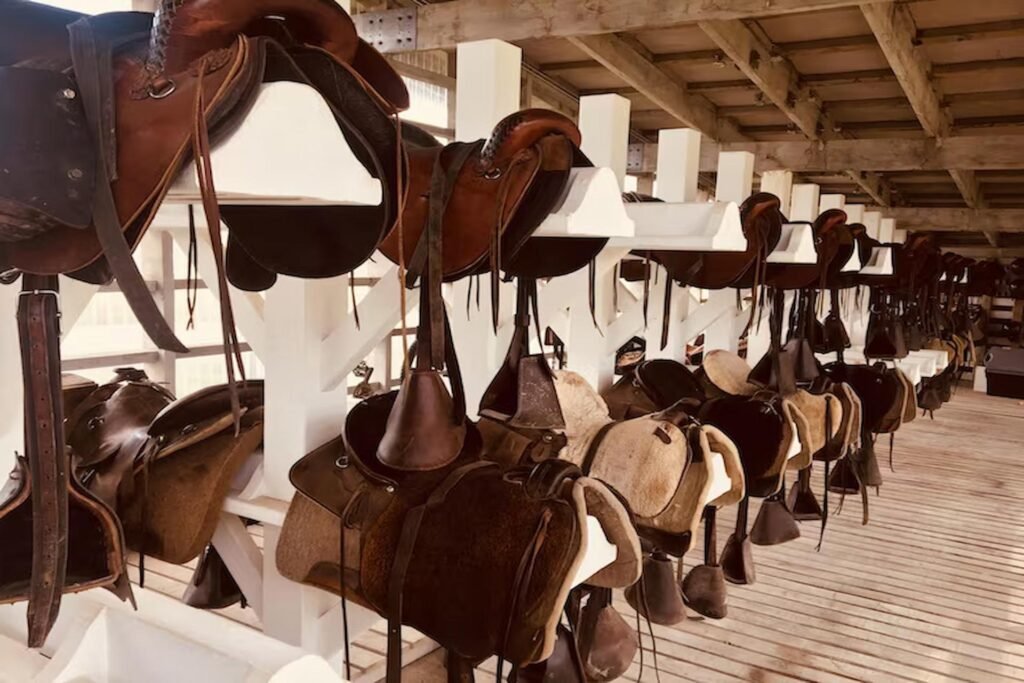Keeping horse jump equipment tidy and secure is essential for maintaining a functional and safe training environment. Without proper storage solutions, items can easily become damaged or misplaced, creating hazards and inefficiencies. A well-organized setup protects valuable gear and contributes to a more streamlined routine for riders and facility staff.
Creative options, such as jump caddies, streamline organization and make equipment more accessible for daily use and competitions. Prioritizing robust and tailored storage can significantly impact the workflow and safety of any equestrian facility. Thoughtfully designed storage systems reduce clutter, minimize the risk of accidents, and help extend the life of expensive gear—all while keeping everything within easy reach when it’s time to train or compete.
Utilizing Vertical Space
Maximizing vertical space is crucial for effectively storing horse jump equipment. Installing wall-mounted racks and custom shelves keeps equipment off the floor, prevents tripping hazards, and ensures good ventilation. Wall racks can be designated for specific equipment, saving time and confusion. Adjustable shelving accommodates changing needs, and durable materials support heavy or awkwardly shaped items.
Multi-Functional Furniture
Multi-functional furniture solutions are practical and space-saving in equestrian environments. Benches with built-in storage compartments or custom cabinetry provide seating and hiding areas for smaller items, minimizing search time and inventory loss. Choose furniture with waterproof and easy-to-clean finishes for mud and weather-prone environments. Modular furniture can adapt to growth or changing equipment demands, while lockable storage units offer security for valuable or hazardous items.
Mobile Storage Options
Mobile storage solutions like carts or trolleys provide flexibility for facilities that frequently change jump courses or share spaces. These portable units lessen staff workload and enable quick setup or breakdown of courses. They can also be used as temporary storage during competitions or clinics. High-quality jump caddies, built for durability and easy maneuverability, are especially effective for these purposes. These storage systems keep spaces organized for daily routines when not in use.
Implementing Organizational Systems
Establishing clear organizational systems is crucial for maintaining an efficient and safe storage environment. Categorize equipment based on type and use, label shelves, bins, or zones, and use visual aids like color coding. Develop written storage protocols for consistency and accountability, assign daily or weekly clean-up responsibilities, and conduct regular walk-throughs to check for misplaced items or hazards. A visual inventory can help new riders and staff familiarize themselves with the system.
Safety Considerations
Safety is crucial in equestrian storage, with racks and furniture designed to withstand weight and shape. Installation should follow best practices to avoid collapses. Regular inspections are essential, especially in weather-prone areas. Storage should avoid blocking emergency exits, and staff should be trained on safe lifting techniques. Non-slip matting in high-traffic areas reduces falls. For more safety tips, see the Practical Horseman.
Regular Maintenance
Regular maintenance is crucial for the safety and effectiveness of storage systems. This includes cleaning shelves, bins, and caddies, inspecting for wear or rust, tightening or replacing hardware, and checking for wood rot or warping. Inspecting all equipment before storing prevents damage and keeps the facility running smoothly. Maintaining a maintenance log provides accountability and reminders for scheduled repairs.

